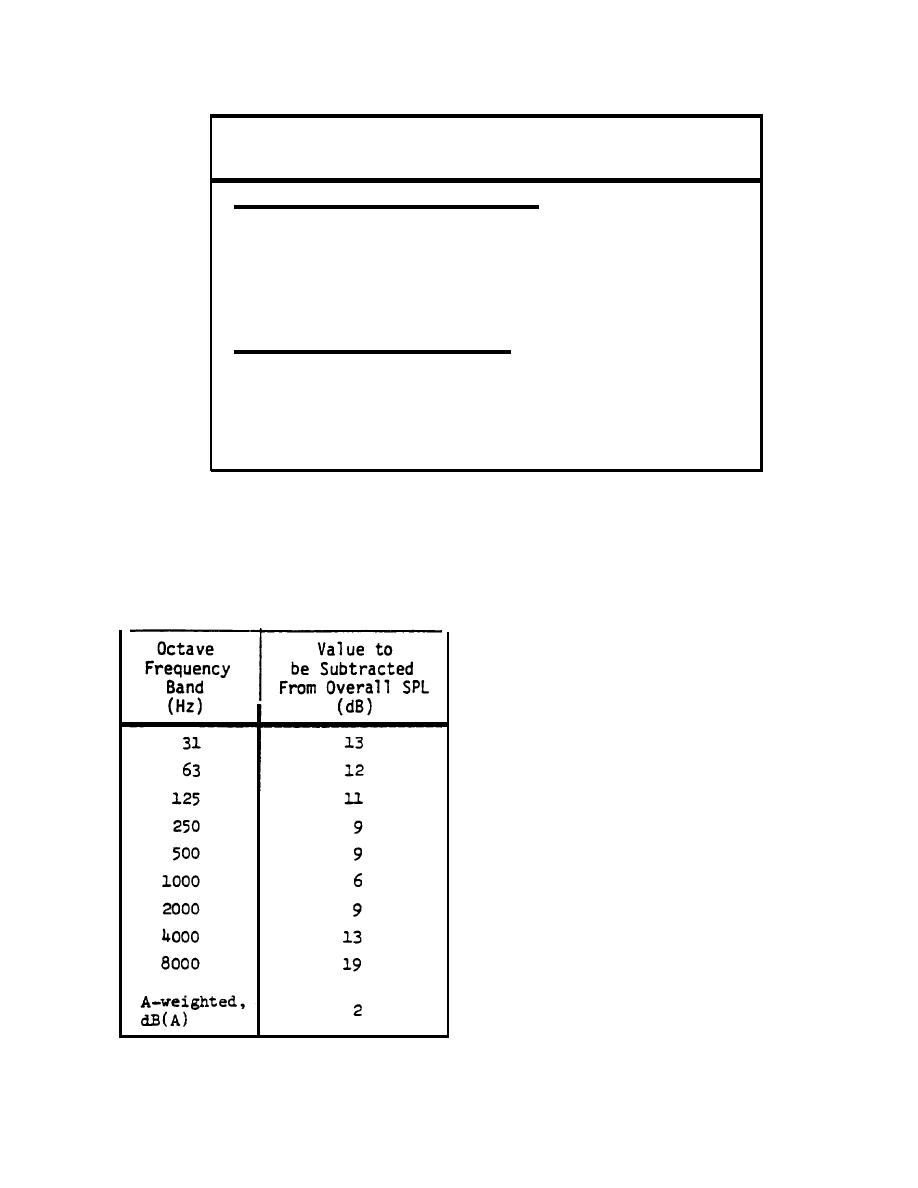
TM 5-805-4/AFJMAN 32-1090
Table C-11. Overall and A-Weighted Sound Pressure Levels (in dB and dB(A) at 3-ft. Distance) for Pumps.
,
Drive Motor Nameplate Power
Speed
Range
Under 100 hp
Above 100 hp
rpm
Overall sound messure level, dB:
71+10 log hp
3000-3600
85+3 log hp
74+10 log hp
1600-1800
88+3 log hp
69+10 log hp
1000-1500
83+3 log hp
67+10 log hp
450- 900
81+3 log hp
A-weighted sound level, dB(A):
69+10 log hp
3000-3600
82+3 log
hp
1600-1800
72+10 log hp
86+3 log hp
67+10 log hp
1000-1500
81+3 log hp
450- 900
65+10 log hp
79+3 log hp
C-12. Fans.
dB) in the octave bands containing the impeller
a. In-duct noise. Recent issues of ASHRAE pub-
These would usually fall in the 1,000 and 2,000 Hz
lications provide updated methods for estimating
octave bands. The data of tables C-11 and C-12
the in-duct noise of ventilating fans. Manufactur-
are summarized in figure C-4.
ers also furnish in-duct PWL data of their fans on
request. A current ASHRAE estimation is given
Table C-12. Frequency Adjustments fin dB) for Pumps.
by equation C-5:
Lw = Kw + 10 log Q + 20 log P + BFI + C,
(eq C-5)
where Lw the in-duct sound power level of the fan
at either the inlet or discharge end of the fan, Kw
the specific sound power level for the particular
fan design, Q is the volume flow rate in cfm
(ft.3/min.), and P is the static pressure produced by
the fan (inches of water gage). Values of Kw for
the octave bands and for various basic fan blade
designs are given in part A of table C-13. The
blade passage frequency of the fan is obtained
from
fan RPM x no. of blades/60
and the "blade frequency increment" BFI (in dB)
is added to the octave band sound power level in
the octave in which the blade passage frequency
occurs. It is best to obtain the number of blades
and the fan rotational speed from the manufac-
turer to calculate the blade passage frequency. In
the event this information is not available, part B
of table C-13 provides the usual blade passage
frequency. The estimates given by this method
assume ideal inlet and outlet flow conditions and
operation of the fan at its design condition. The
noise is quite critical to these conditions and
increases significantly for deviations from ideal.
C-10


 Previous Page
Previous Page
